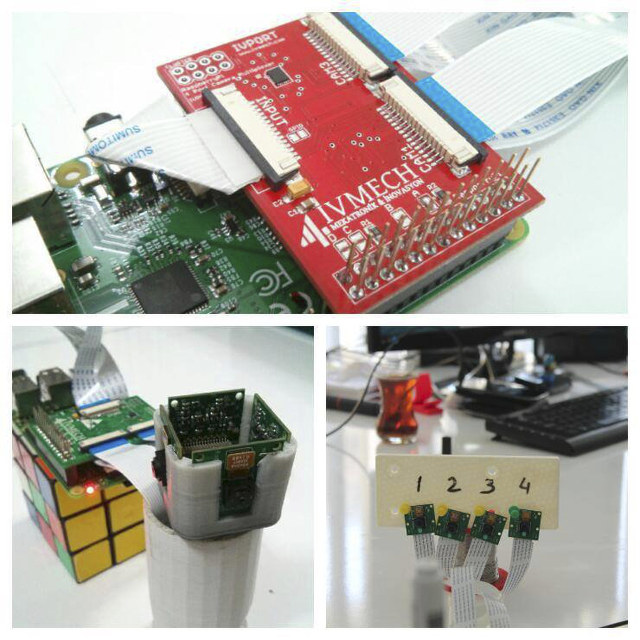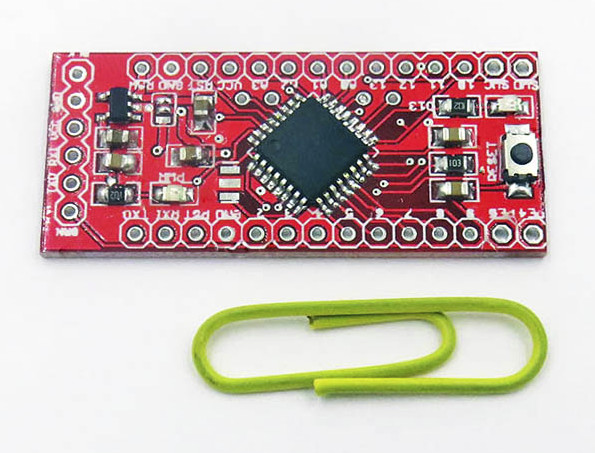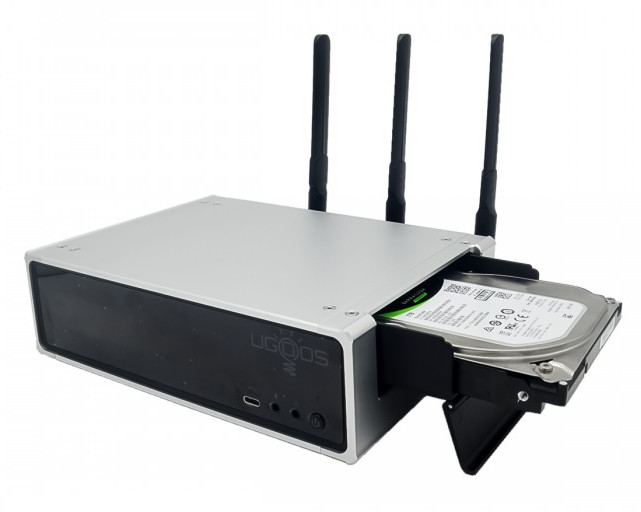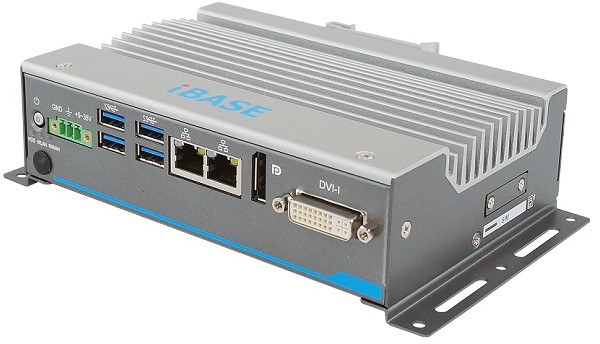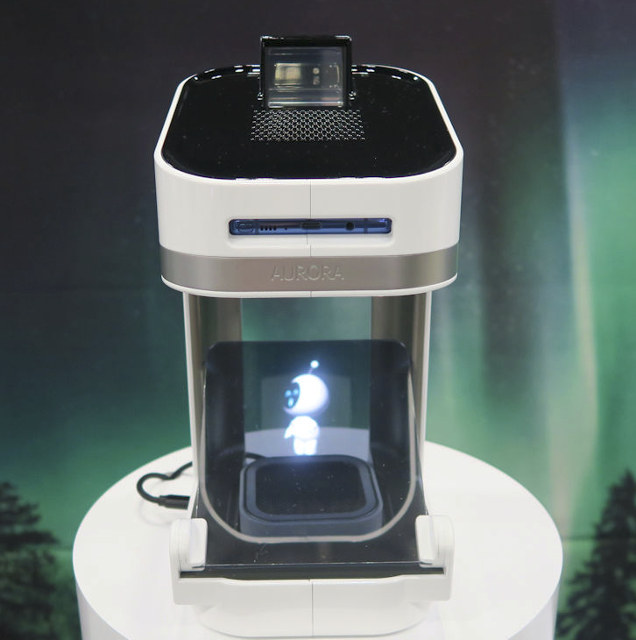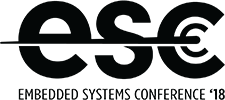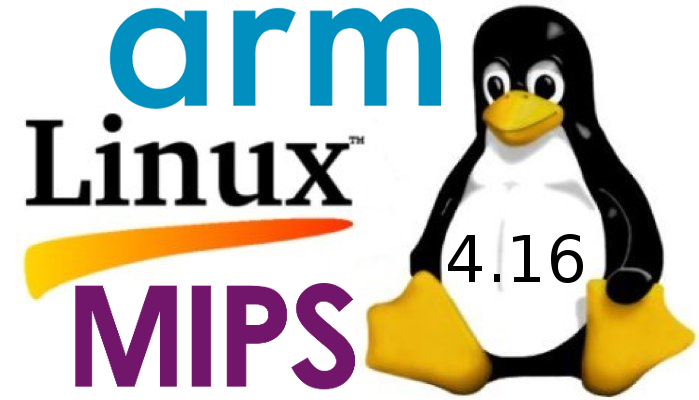The Pi camera is a popular add-on for the Raspberry Pi boards, it connects to the MIPI CSI connector of the board, and offers better performance than USB cameras. But we are now seeing computer vision applications using more than one camera with stereo vision, 360 degree camera setups, and so on. One way would be to connect a Pi camera, and use the USB ports for the extra cameras, but Canerdurmusoglu had another idea, and instead designed IVport V2 Camera Multiplexer Board allowing you to connect up to four official Pi cameras to a single Raspberry Pi board. The maximum number of supported cameras is 16 since several boards can be daisy- chained. IVport V2 works with Raspberry Pi Camera Module V2 (8MP version), and you can switch between cameras using 3 GPIO pins. If I understand correctly that setup does not allows you to use all the cameras […]
$1.40 EDMINI Development Board Features LogicGreen LGT8F328P MCU Compatible with ATMega328P/Arduino
Arduino compatible boards are normally using Microphip Atmel microcontrollers, but as we’ve see with GD32 clone of STM32 MCU, some companies are making MCU clones too, usually with some improvements, and LogicGreen designed LGT8F328P micro-controller (mostly) compatible with Atmel ATMega328P micro-controller and adding features such as DAC output, PWM specific features, a computing accelerator (DSC), and others. The MCU also runs at double the clock speed (32 MHz). I found out about the new MCU via Electrodragon selling EDMINI Arduino compatible development board based on LGT8F328P micro-controller for $1.40. The board looks to be a clone of Arduino Pro Mini. Main specifications for EDMINI board: MCU – LogicGreen 8F328 (LGT8F328P) MCU – 99% compatible with ATMEGA328P MCU Expansion – Same pins as Arduino Pro Mini plus SWD/SWC pins, PE4/PE5 pins Misc – On-board power LED, D13 LED, reset button Power Supply – 5V RAW as VCC directly in; regulated 3.3V […]
Ugoos UT5 Pro is a Rockchip RK3399 based TV Box with a 3.5″ SATA Bay
It’s already possible to connect a 3.5″ SATA drive to Rockchip RK3399 based hardware with products like Vorke Z3 TV box exposing an external SATA connector, or development boards such as ODROID-N1, Orange Pi RK3399, or Firefly AIO-3399J. None of those solutions offers a neat way to store your hard drive, so you’d have cables and the drive exposed to dust, unless you make your own case. Ugoos UT5 Pro TV box offers an easier way to neatly connect a 3.5″ SATA drive since it includes an internal SATA slot. The device also features a USB 3.0 device port allowing user to connect the box directly to their computer to transfer files. Ugoos UT5 Pro specifications: SoC – Rockchip RK3399 dual core Cortex-A72 + quad core Cortex-A53, Arm Mali-860MP4 GPU with support for OpenGL ES1.1/2.0/3.0/3.1, OpenVG1.1, OpenCL, DX11 System Memory – 4GB DDRIII-2133 (2GB option) Storage 32GB eMMC flash (optional:16/32/64GB) […]
IBASE AGS100/AGS102 Smart IoT Gateway Targets Industrial Control and Factory Automation
IBASE has introduced AGS100 and AGS102 intelligent IoT gateways powered by an Intel Apollo Lake processor, and specifically geared towards industrial control and factory automation applications. AGS100 can be powered by Intel Atom processor E3950/ E3930 with extended operating temperature (-40°C to 70°C), Intel Pentium N4200, and Celeron N3350 processors (-20°C to 60°C), while AGS102 adds support for two RS232 ports and more GPIOs. Specifications: SoC – Intel Atom E3950/E3930 or Pentium N4200/ Celeron N3350 processor System Memory – 1x 4GB DDR3L-1866 SO-DIMM, up to 8GB Storage – 1x mSATA socket (Mini-PCI-E), 1x 2242 M.2 B-Key socket for mSATA SSD Rear Panel External I/O 1x DVI-I + 1x DisplayPort connector 4x USB 3.0 ports 2x RJ45 Gigabit Ethernet port 3x LED indicators (HDD, WLAN, WWAN) 1x power button with green LED 1x 3-pins DC-in terminal block type for 9-36V DC input 1x Antenna hole for WLAN module AGS102 only – […]
Samsung Aurora Smart Speaker Prototype is Powered by a Smartphone, Features an Hologram-like Character
Samsung Electronics has showcased a smart / A.I. speaker prototype at SXSW 2018 trade show last month, that can be manufactured at low cost since it relies on a smartphone to provide a processor, microphone, and other equipment. The smart speaker also uses the smartphone’s screen to show an hologram to greet users. Meet Samsung “Aurora”. The smartphone is placed horizontally (blue above) in a slot in the upper part of the speaker, and a hologram-like character floats above the Bluetooth speaker included of the kit. The part on the top surface is an optical mechanism using the smartphone’s camera for image recognition. The smart speaker also charges the phone, but it’s unclear how you are supposed to answer phone calls once it is inserted in the speaker… The concept looks similar to Vinclu Gatebox which we covered in 2016, except it relies on a smartphone. Samsung is said to […]
SiFive Partners with Western Digital to Produce 1 Billion RISC-V Cores
Architecture like Arm and x86 are well established, and initiatives like RISC-V opens source ISA have potential, but market acceptance and commercial success are not guaranteed. But RISC-V just got a big boost, as SiFive announced it raised $50.6 million in a Series C round from existing and new investors, as well as strategic partners such as Huami, SK Telecom and Western Digital. Even more importantly, Sifive and Western Digital signed a multi-year license for the Freedom Platform, with Western Digital pledging to produce 1 billion RISC-V cores. The announcement does not explicitly mention which Freedom platform, but Western Digital statement makes it quite clear they’ll use one of the more powerful (and Linux capable) core: RISC-V delivers a platform for innovation unshackled from the proprietary interface of the past. This freedom allows us to bring compute closer to data to optimize special purpose compute capabilities targeted at Big Data and […]
Embedded Systems Conference 2018 Schedule – IoT, Security, Artificial Intelligence, and More
The Embedded Systems Conference takes place each year in Boston, US in April or May. This year, the event will occur on April 18-19, and the organizers have published the schedule with 7 tracks: Advanced Technologies, Center Stage (free), Embedded Hardware Design & Verification, Embedded Software Design & Verification, IoT and Connected Devices, Keynotes (free) and Special Event (free). Even if you can’t attend, it’s always useful to have a look at the schedule to learn about potential industry developments. So I’ve made my own virtual schedule with some of the sessions I found relevant to this blog. Wednesday, April 18 8:00 – 10:00 – An Introduction to RTOS by Jean Labrosse (Software Architect, Silicon Labs) This tutorial will help you understand what RTOSs are and how they work so that you can make better use of their features. The class will explain what an RTOS is and why you […]
Linux 4.16 Release – Main Changes, Arm and MIPS Architectures
Linus Torvalds has just released Linux 4.16: So the take from final week of the 4.16 release looks a lot like rc7, in that about half of it is networking. If it wasn’t for that, it would all be very small and calm. We had a number of fixes and cleanups elsewhere, but none of it made me go “uhhuh, better let this soak for another week”. And davem didn’t think the networking was a reason to delay the release, so I’m not. End result: 4.16 is out, and the merge window for 4.17 is open and I’ll start doing pull requests tomorrow. Outside of networking, most of the last week was various arch fixlets (powerpc, arm, x86, arm64), some driver fixes (mainly scsi and rdma) and misc other noise (documentation, vm, perf). The appended shortlog gives an overview of the details (again, this is only the small stuff in […]


